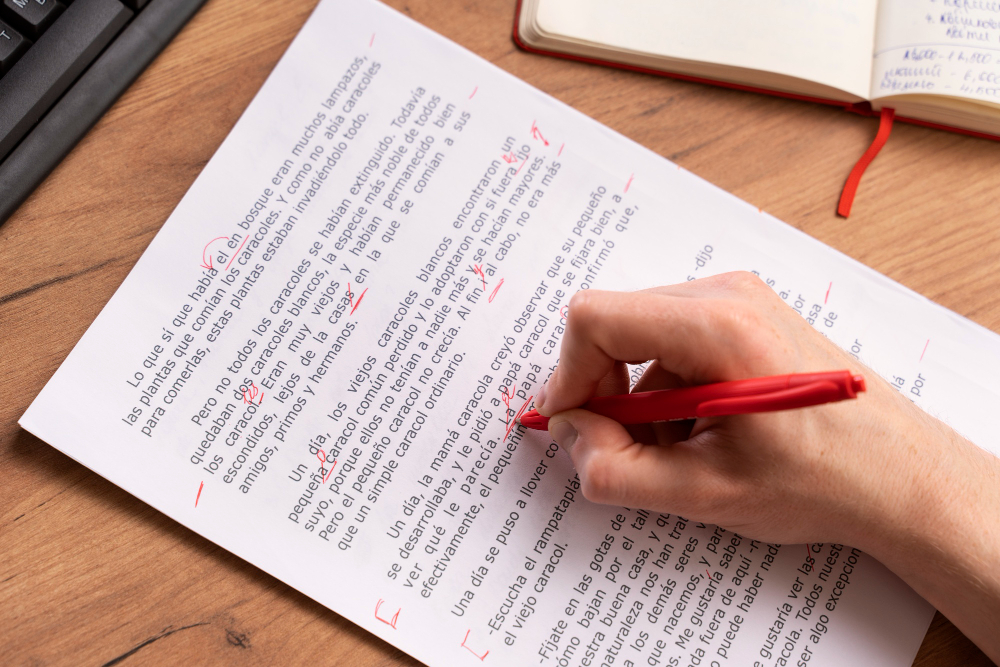Effective Proofreading and Editing Techniques

Table of Contents
Introduction
Effective Proofreading Techniques
a. Take a Break
b. Read Aloud
c. Use a Checklist
d. Get a Second Opinion
Effective Editing Techniques
a. Identify Your Goals
b. Reorganize Your Content
c. Refine Your Style and Tone
d. Eliminate Unnecessary Words and Phrases
Tips for Catching Errors and Improving Readability
a. Focus on One Thing at a Time
b. Use Spell Check and Grammar Check Tools
c. Use Active Voice
d. Vary Your Sentence Structure
Conclusion
Proofreading and editing are critical steps in the writing process that can help writers produce effective and polished writing. However, it can be challenging to catch errors and make improvements to your writing. In this blog post, we will discuss effective proofreading and editing techniques to improve your writing. These techniques can help you catch errors, improve readability, and refine the overall structure and style of your writing.
Effective Proofreading Techniques
Proofreading is essential for ensuring that your writing is accurate, error-free, and well-formatted. Here are some effective proofreading techniques:
Take a Break: Take a break between writing and proofreading to give your mind a rest. This can help you approach your writing with fresh eyes, making it easier to catch errors that you may have overlooked before.
Read Aloud: Read your writing aloud to catch errors that you may not catch by reading silently. This can help you identify awkward phrasing and mistakes in grammar and punctuation.
Use a Checklist: Use a proofreading checklist to ensure that you don't miss anything. A checklist can include items such as spelling, grammar, punctuation, formatting, and consistency.
Get a Second Opinion: Get a second opinion from a colleague, friend, or family member. A fresh pair of eyes can catch errors and provide valuable feedback on your writing.
Effective Editing Techniques
Editing is essential for improving the content, structure, and style of your writing. Here are some effective editing techniques:
Identify Your Goals: Identify the goals of your writing and ensure that your writing meets those goals. This can involve refining your thesis, ensuring that your writing is focused, and ensuring that your writing is relevant to your audience.
Reorganize Your Content: Reorganize your content to improve the structure and flow of your writing. This may involve moving paragraphs or sentences, adding transitional phrases, and ensuring that your writing is organized logically.
Refine Your Style and Tone: Refine your style and tone to ensure that your writing is engaging, persuasive, and impactful. This may involve adjusting your word choice, sentence structure, and tone to match the needs of your audience.
Eliminate Unnecessary Words and Phrases: Eliminate unnecessary words and phrases to make your writing more concise and effective. This can involve cutting out redundant phrases, eliminating filler words, and ensuring that your writing is focused.
Tips for Catching Errors and Improving Readability
Here are some tips for catching errors and improving readability:
Focus on One Thing at a Time: Focus on one aspect of your writing at a time, such as spelling or grammar. This can help you catch errors more effectively and ensure that you don't overlook anything.
Use Spell Check and Grammar Check Tools: Use spell check and grammar check tools to catch errors that you may have missed. However, don't rely solely on these tools, as they may not catch all errors.
Use Active Voice: Use active voice instead of passive voice to make your writing more engaging and effective. Active voice emphasizes the subject of the sentence and makes it clear who is performing the action.
Vary Your Sentence Structure: Vary your sentence structure to keep your writing interesting and engaging. Use a mix of short and long sentences, and vary your sentence structure to avoid repetition and monotony.
Proofreading and editing are essential for producing effective and polished writing. By using effective proofreading and editing techniques, you can catch errors, improve readability, and refine the overall structure and style of your writing. Whether you are a student, a professional, or a hobbyist writer, these techniques can help you produce writing that is engaging, effective, and impactful. By taking the time to proofread and edit your writing, you can ensure that your writing achieves its intended purpose and resonates with its audience.
--------------------------------------
ZapMyWork.com is your one-stop shop for all your freelance needs. We are an online marketplace that connects clients with skilled and talented freelancers from around the world. One of the things that sets us apart from other freelance marketplaces is our rigorous screening process. We carefully vet all of our freelancers to ensure that they have the skills and experience to deliver high-quality work, one project at a time. Let us know how we can help you today!
Recent Posts
-
04/26/2024Thriving Through Flexibility: How FlexiConsulting Found Success with ZapMyWork
-
04/19/2024Flourishing Home Trends: How "ZapMyWork" Became the Cornerstone of Our Interior Design Success
-
04/15/2024Weaving Success with ZapMyWork's Freelance Marketplace
-
04/12/2024Streamlining Project Management in Small Businesses: The ZapMyWork Experience with ClearVision Consulting
-
04/10/2024Transforming Toy Design with Electronics Engineering Freelancers: A Case Study on ToyInnovate
Store Address
Information
Copyright © 2022 - Present. ZapMyWork, LLC. All Rights Reserved




